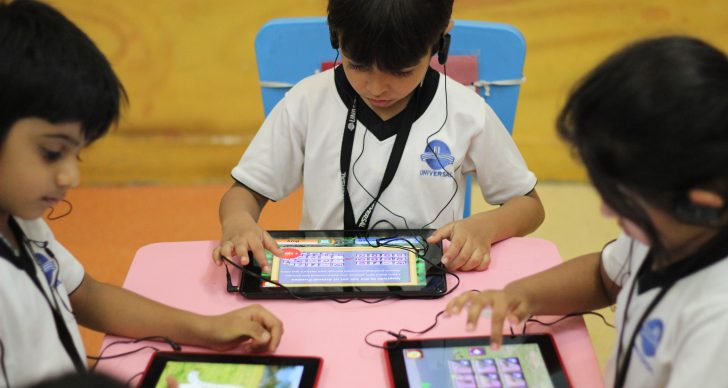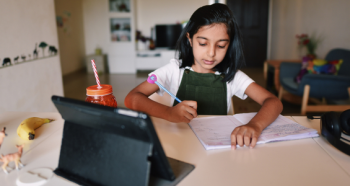Is it possible to support or spark creativity with digital tools?
Of course it is. Any resource that challenges, encourages and fosters a sense of enthusiasm in the classroom can have an impact. However, the same could be said for a wild animal running into a learning space.
It is crucial to focus on the purpose of digital tools and their ability to add value in a learning environment. This blog post looks at three examples of online tools that I feel any teacher or learner can use to spark their creativity.
About the learning
We should consider digital tools as part of a plethora of resources available to teachers and learners. Used appropriately they can have significant impact. Used without planning or careful consideration they can be an utter waste of time. It isn’t about the technology, it is about the learning. If there is no clear identifiable additional value in using technology to support learning it should not be used.
Effective digital tools are those that provide learners with the opportunity to be innovative, to approach challenges from different perspectives, and to develop their own creative solutions. In recent years a justification for using digital tools is that they enthuse and energise learners. These can no longer be the only reasons. There has to be a tangible benefit to the learning process.
Whilst teachers can be creative in using digital tools to enhance their presentation of lesson materials, this doesn’t necessarily spark learners’ creativity. The real impact can be identified when learners take ownership, are asked to justify and explain their digital choices, and are encouraged to deliver on the higher potential of such tools.
Socrative is a quiz, survey and feedback tool. It can be used to deliver a quiz during a lesson and then shared with the entire class to identify progress. However, it becomes far more powerful when learners are challenged to create their own activities.
This tool can spark creativity by encouraging learners to construct their own digital reflection. They can gather feedback on their latest work, test understanding and evaluate the impact of their work. They can also share their proposals with the rest of their class, gather feedback and then ask for votes on that feedback. This is straightforward within Socrative and enables an effective collaborative and creative process.
Classtools.net is a splendid online collection of tools to spark creativity. It allows anyone to create their own learning and reflection activities. Again, this is most powerful when learners are challenged to create their own versions. There are 40 freely available tools and frequent new additions.
One of the best examples is ‘Fakebook’. Learners can create their own Facebook-like page for an individual or topic that they are studying. For example, they can create profiles that track the impact of an important event, reflections on a political debate or a stream of creativity that led to a musical masterpiece. This is precisely the additional value that a digital tool offers that simply isn’t possible via a more traditional medium. It isn’t a replacement for other resources but rather an extension or catalyst for creativity.
Kahoot is my personal favourite digital tool for learning. It allows anyone to create their own quizzes for classroom competition. These quizzes, or ‘Kahoots’, can be shared with a whole class who answer using any device from mobile phones to desktops. There are multiple layers to this. When first used it seems like an entertaining plenary exercise. A scoreboard based on response time appears and a whole additional layer of competition reveals itself. It becomes both an intellectual and timed response challenge. Do learners try to press the answer buttons as rapidly as possible or should they take time to read the question carefully?
As with Socrative, the greatest impact is when teachers transfer ownership to students. This sparks learners’ creativity by asking them to create their own learning activities. They have to decide which aspect of a topic to focus on, design their own challenging assessment and take ownership of the learning process. When a ‘Kahoot’ is shared across multiple classes, regardless of geographic location, it enables a far deeper learning process which empowers learners.
Enhancing the learning process
Every day new educational resources become available. It is important that both teachers and learners become discerning users and don’t immediately see the latest flashy tool as being some form of digital silver bullet.
The above examples add considerable value to the learning process. Approaching such tools with critical enthusiasm enables teachers and learners to deliver on their creative potential and embed digital tools within their learning.








